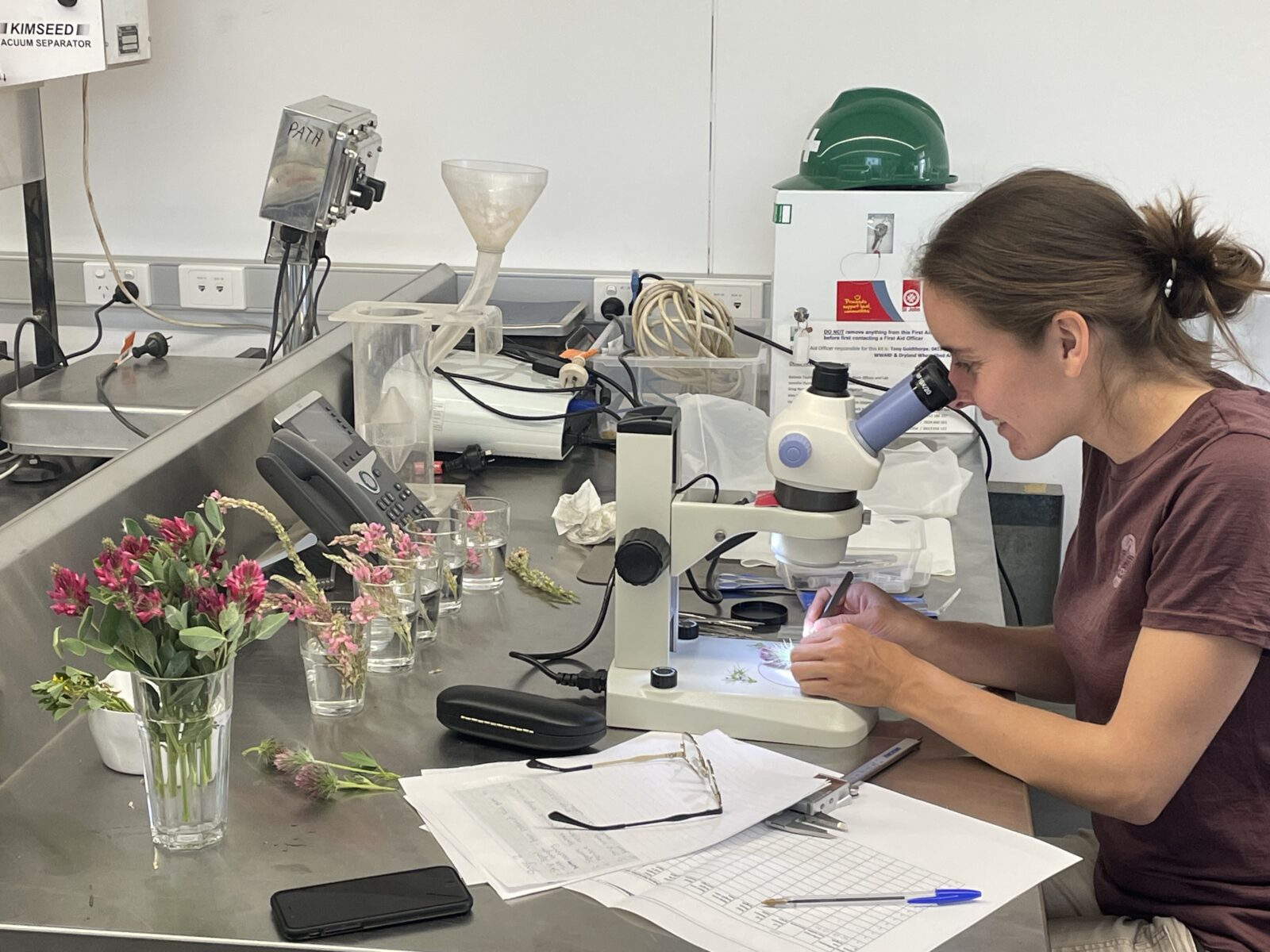Unearthing a quiet giant: Australia’s rising truffle industry

 HONEY BEE & POLLINATION / Monday, 17 June 2024
HONEY BEE & POLLINATION / Monday, 17 June 2024 
A pilot study exploring the potential of pasture legumes as a food source for honey bees is on track to deliver valuable results to beekeepers in 2024.
Dr Richard Hayes of the NSW Department of Primary Industries is leading the research project Clover4Bees, which is investigating how pasture legumes produced on private land can play a role in honey production in light of reduced native floral resources, reduced access to public land, and increased demand for bee services for pollination.
Richard hopes the research will pave the way for tangible, on-ground collaboration between apiarists, researchers and other agricultural industries, such as pasture-grown livestock or horticulture.
“We want to deliver to industry a shortlist of species that we think would be of interest to apiarists and the Australian honey bee industry,” he said.
“We’re also examining the methods to compare pasture legume species for their honey production attributes, so that future research can incorporate an assessment of important floral characteristics into standard legume evaluation.
“We’re coming up to the finish line. We’re in the process of getting our field data into a database so we can analyse it, check it for errors and interpret the findings.”
Species and sites in the spotlight
Richard and his team evaluated 22 pasture legume species at four locations across New South Wales: Wagga Wagga, Tocal, Cowra and Glen Innes. The team quantified flowering abundance, flower structure and the flowering window of different species in the first year of the project, and turned their attention to bee preference, nectar secretion and nectar composition in the second year.
The data will be used to create the shortlist of the most promising pasture legume species that could provide an additional food source to honey bees. The team will also use bee visitation data to assess which species are not attractive to bees, which is just as important in producing the shortlist.
“Having flowers isn’t enough. You can have flowers out there and the bees don’t go to them, so you’ve got to understand what it is about the flowers that is beneficial to honey production,” Richard said.
“We saw some clear winners and they seemed largely consistent between sites. When there were bees around, they tended to go for the same sort of species regardless of the site.”
The project is not without its challenges, however – the team is breaking new ground in its work to refine and test methodologies to compare traits across species.
“It’s very difficult to compare one species with another, particularly when the flowers are a different size, shape and structure, and when the flowering windows don’t overlap,” Richard said.
However, the project team had success extracting nectar from almost every species examined. This provided confidence in their methodology to underpin more detailed comparisons of these species in the future.
Industry involvement a key element of success
An industry advisory committee of experienced apiarists provided valuable input to ensure the project findings would directly benefit beekeepers.
“It was important in this project that we had a reference group of experienced beekeepers to make sure our findings are rational and practical for the industry,” Richard said.
The project team, in collaboration with the industry advisory group, assessed the data for feasibility. Richard is keen to ensure the recommended species are not only productive and attractive to bees, but are realistic choices from a livestock producer perspective. For instance, a species can be attractive to bees, but its usefulness will be limited in pastures if it has a small niche or cannot adapt to a variety of climates.
“From an industry perspective, we’re looking for something that is not only reasonably attractive to bees, but also widespread and well adapted.”
Opening doors for future research and collaboration
Richard and his team hope their results will have a wide range of uses across the honey bee industry and other agricultural industries, and will spark opportunities for collaboration.
“We’re just scratching the surface with this initial project. For example, there’s untapped potential in terms of pasture seed production,” Richard said.
“Honey bee producers are looking to take these species of interest through to the end of flowering, so there’s opportunity to follow through and harvest legume seed.
Many of these alternative legume species were developed specifically so that they could be harvested on farm using conventional machinery.”
The project team hopes that future research could use their methodology to analyse other pasture legume species and assess how pasture management or growing conditions can influence species’ nectar production.
Richard also identified an opportunity for the shortlisted species to be grown alongside horticultural crops to improve bee health during pollination, and contribute to other well-researched legume crop benefits, such as soil nitrogen fixation.
“There’s a lot of scope to improve our productivity just by thinking about pollinators in general,” Richard said.
Find out more about what is happening in the AgriFutures Honey Bee & Pollination Program
 TRUFFLES / 17.06.24
TRUFFLES / 17.06.24  HONEY BEE & POLLINATION / 17.06.24
HONEY BEE & POLLINATION / 17.06.24  WORKFORCE AND LEADERSHIP / 17.06.24
WORKFORCE AND LEADERSHIP / 17.06.24  RICE / 17.06.24
RICE / 17.06.24